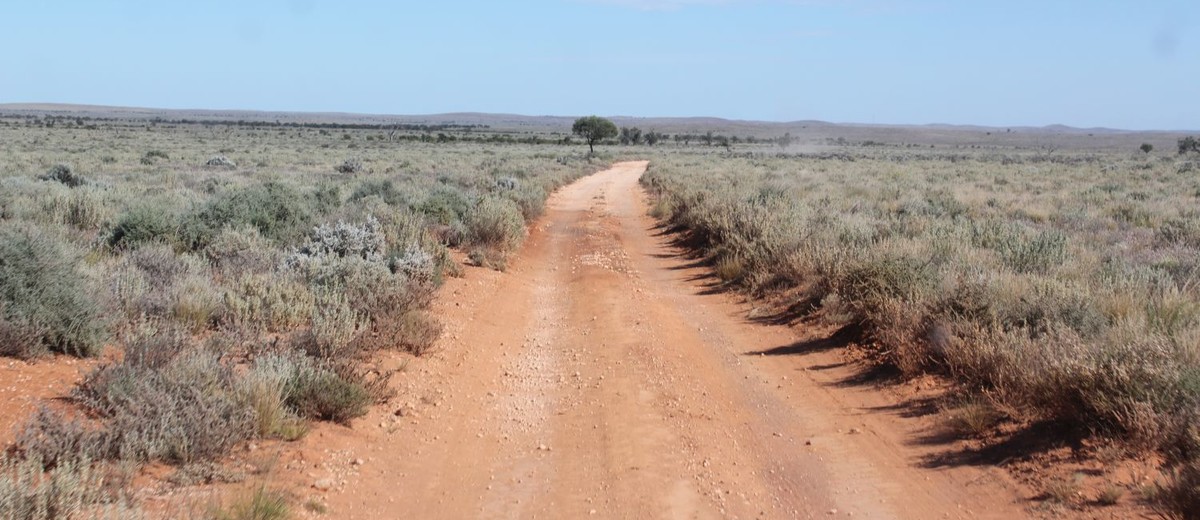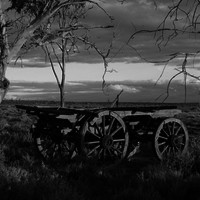South Australia occupies over 984 000km2, about an eighth of Australia. Most of the state is low, flat, and covered by sand, light limestone soils or red earths supporting mallee, saltbush or grassland. In the Far North, granite hills intrude into these soils, while around Port Lincoln on Eyre Peninsula, from the Flinders Ranges south to Kangaroo Island, and in the South East, hills and plains of heavier clays and loams, dominated by gum, box or stringybark, mark higher rainfall areas. These are the heartland of European occupation of Australia’s driest state. Only one large river, the River Murray, finds the sea in South Australia.
Land shapes and is shaped by what people think. Clan domain, suburban garden, pastoral run or national park, people try to make land what they think it should be. South Australia’s Aborigines strove to keep the country as their creator ancestors made it, while its Europeans worked to fit the land to the demands of an export economy. Each has accepted what the land would permit, though in different degree. Each has made particular landscapes, and each has developed a sense of place, a feeling of home, a land of the mind. South Australia’s history reflects an interaction between the land and how people have responded to it.
Aboriginal connections to land
For Aboriginal people the world began in the mind of God, who made the land, gave it light, and made creator ancestors. Each creator began a species, including people of the same flesh as its species, and each travelled the land creating features and legends associated with its species. Each then rested in the land, where he or she remains today. Thus Aboriginal people saw the existence and survival of all life, and of all the land’s features, as proof of a creator’s action and presence. Aboriginal people were responsible for the well-being of the species of their flesh, and for maintaining the features and localities associated with it. They could not make the land ‘better’ or ‘worse’, for that was not theirs to judge. They had to leave land and life as they found them. If not, they risked the existence of their descendants, who depended on a welcoming habitat. Land care was a fundamental duty of life. Groups, clans, families and individuals all maintained particular localities, so that no part of the land was left uncared for. Many Aboriginal people still hold these beliefs.
Such beliefs made Aboriginal people conservative and conservationist. They did not leave land untouched, because that would let an ordered landscape decay into disorder and threaten the habitat and survival of some species – for example those which need open country in areas prone to revert to scrub. Instead they maintained the land by fire and by species protection or reduction. The land thus represented constant maintenance duties, and timeless associations linking the beginnings of creation to the infinite future, and visible proof of the truth of Aboriginal history. This was so of all ‘South Australia’, even though some parts were more productive than others. These parts supported larger populations and easier lives, but even in harsh country careful maintenance made life less hard. In any case, Aboriginal people related to land not because it was productive, but because it was the country of their ancestors and their descendants. A sense of purpose reinforced a sense of place.
European attitudes to land
Newcomers to South Australia, mostly Europeans, had no such sense of place. They had in their heads images of other lands and, initially at least, they wanted to make South Australian land meet these conceptions. As in Europe, they respected land as property, and expected land to be the backbone of society and the economy.
The father of ‘European’ South Australia, Edward Gibbon Wakefield, argued that land should be sold in small sections, ideally 80 acres (32ha), at a price sufficient to pay for enough migrants to work them. This ‘sufficient price’ should be high, to meet the cost of migration, and to ensure that the new migrants must work for existing landholders for a time, thus providing the labour needed to improve the land, and preventing the dispersal of settlement to the detriment of agriculture and civilised life. In other words, Wakefield sought capitalist investment in land.
Wakefield assumed that all land was equally valuable and fit for agriculture, and that new migrants would have to work on it. These assumptions proved incorrect. In any case the ‘sufficient price’ was set not by the value of South Australian land, or the cost of migration, or what would prevent settlement dispersing, but by the price of land in New South Wales, since if that colony’s land cost less, South Australian migrants would go there. Yet Wakefield condemned New South Wales: it was a pastoral not an agricultural colony, labour was expensive, and the price of land did not prevent settlement dispersing.
Colonisation of South Australian
South Australian land settlement followed the New South Wales pattern. Most land was taken up by large landholders, who blocked small-holder access, and aspired to economic, social and political eminence. This offended a growing democratic sentiment, and in time parliament successively pared away the privileges of large landholders, chiefly via closer settlement legislation.
At the same time the colony’s landholders large and small, although remaining subject to the demands of an export economy, slowly adapted to the land, thereby developing viable industries and a sense of place. By the 1840s wheat growers were moving from English wet wheats to varieties suited to a dry colony, experimenting with fallowing and fertilising, and inventing machinery adopted throughout the world, notably the stripper harvester and the stump-jump plough. Others introduced new stock breeds or grain and grape varieties, new pasture regimes and management, and harvesting and marketing methods suited to local conditions. Australian farm production is among the most efficient in the world, and creative responses to the challenges of Australian land may be a cause of this.
Changing attitudes and land use
State assistance was also crucial. For a century governments saw their main function as settling land and fitting it better to a growing population and an increasing export market. Until 1914 land was the basis of the key government department, while the Department of Agriculture (established 1902), Roseworthy Agricultural College (1883), the Waite Agricultural Research Institute (1924) and a wide network of Agricultural Bureau branches (from 1886) conducted research and advised primary producers on a scale unmatched by any other aspect of government. Governments laid out country towns, subsidised shipping, built railways, established irrigation schemes and drained swamps in the South East to promote settlement and production. Sometimes private enterprise assisted, notably in the Australian Mutual Provident Society’s scheme, which from 1949 added trace elements to the southeastern Ninety-Mile Desert, converting it from heath to farmland.
By then important changes in thinking about land were taking hold. After 1945 coal, minerals, secondary industry and servicing Adelaide were replacing land at the centre of government attention. State assistance for primary production dwindled. By the 1970s South Australian attitudes to land were no longer dominated by ancient European land-use notions, but by primarily urban conservationist values. Land became an asset to be protected as much as a commodity to be exploited, and such new issues as global warming, atmospheric pollution and salination joined old concerns of soil and water degradation, erosion and species depletion in shaping non-Aboriginal attitudes to land. Clearing was controlled rather than encouraged, leasehold stocking rates reduced and national parks and conservation parks multiplied.
Yet most houses are still built on prime land, and most South Australians still want to make land fit images in their heads. On the one hand they work, sometimes very hard, to make their house gardens models of domesticity and pleasure; on the other they want rural land left to recuperate, to revert to what they assume it was when Europeans arrived. Traditional Aboriginal land managers would have opposed both.




Add your comment